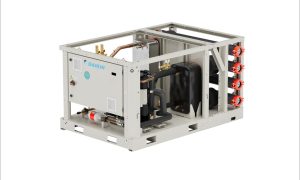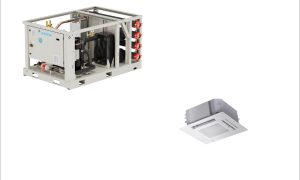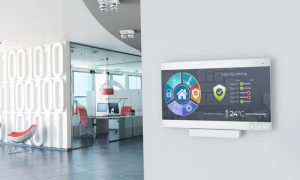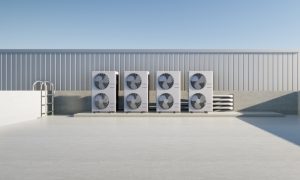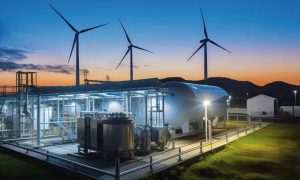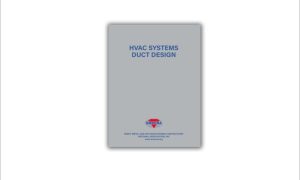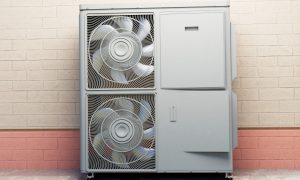It’s the smoke that kills people and not the fire. So, it’s key to have efficient and sustainable systems to maintain supportive ambiance in an HVAC systems.
Talking about the emergence of smart factories and smart technologies shaping up the HVAC&R sector, Frank Taaning Grundholm, Vice President-Global HVACR Sales Motion Business, ABB suggests on developing technologies complying with the geographical environment, and conducting predictive maintenance accordingly is highly recommended for a connected buildings.
How you look at Indian and global market for HVAC?
I have been visiting India for the last 20 years and have seen the Indian market maturing over these years. In the past I have seen companies with large installed electronic devices on the rooftop, but in an IP20 enclosure – with rain, dust and other external particles coming into the electronic devices. So, it was prone to failure but since it was cost effective, it was commonly used. Today, when we walk around the ACREX 2020 show, we find a wide range of specialised solutions with focus on energy efficiency. Our customers today prefer high quality, energy-efficient solutions and that’s why they appreciate our offerings. This acceptance and response has evolved in the Indian market, particularly over the last 10 years.
It’s not just in India, the global markets are also evolving. Earlier, the access to technical training was scarce, but today the industry offers training and development for every single aspect of their profile, including digitalisation. Our customers within the HVAC industry were not familiar with the impact on power quality from our products, so we came across various queries on how to resolve power quality issues in a building and improve power efficiency. We realised the need to educate the installers and the end users in the HVAC industry on this topic.
What kind of technologies do you suggest to ensure energy efficiency in HVAC systems?
We are in discussion with various consultants on how to specify solutions to secure energy efficiency. Many solutions today are specified at the full load point of the building, but when I look at the building’s load profile, 99 percent of the time, we operate at 80 percent load or less, and probably most of the time around 40 to 60 percent load. Yet, we specify our buildings for best efficiency at 100 percent load, and this makes little sense. This is why we’re having dialogues with the relevant stakeholders; how do we create a load profile that makes sense for each geography -so we can get closer to the actual energy performance. We need to compare solutions and then recommend the best option.
We tested samples of our new motors and drives in combination and compared it with the other competitive technologies, including some EC fan motors. What we found was that aside from the fact that EC fan motors are IE4 and our new motor is IE5, the part load efficiency on the motor is much higher with standard solutions than with EC fan motors.
How can smart buildings and smart factories be a game changer in HVAC sector?
I see practical and efficiency changes on facility management. In my view, digitalisation will enable facility management companies to utilise their service and maintenance engineers more efficiently. Most of the companies typically maintain approximately 10 to 20 buildings in varied locations with centralised scheduling for the maintenance; if there’s an unexpected failure, this may create discrepancies for their maintenance team to reach to those locations, which means more time is required to also include those random incidents. To manage situations like these, we have introduced ABB Ability™ condition monitoring for powertrains, where we take our components – the drive, the motor, bearings and gearing, and connect them into one dashboard, and view all data points and identify issues before they create complications. With this, we can schedule maintenance based on locations with highest risk of failures and even plan spare parts stocking. This also gives us insights to know which parts have potential issues. With this evolution and condition monitoring solution, the workforce efficiency will improve drastically.
Can you talk about performing predictive maintenance in HVAC system?
Predictive maintenance is one key aspect for an efficient and smooth functioning of any system. If we start putting differential pressure transducers across a filter, then we can start looking at how contaminated the filters get? That means, you can look at the actual wear and tear on filters for each building, rather than exchanging the filters on a fixed schedule.
Even filter manufacturers have efficiency standards, and I’m sure their view will also be the same. A lot of filters get exchanged even when they are not dirty or broken. We change it because it is scheduled, instead of being needed; that’s the level of intelligence we require in a smart building. The same is the case for drives when we’ve had very high load conditions, or high ambient temperatures for a long time, then maybe it’s a good idea to get a service visit just to make sure that the drive is still ready for the next heat wave. And that’s how we can avoid break downs. If there’s a fan break down, it won’t create a major issue, however if it happens in a residential or commercial building’s elevator, it’s a major break down in fan. A fan break down will compromise the comfort of the occupants in the buildings, but when it impacts people in elevators, you’ll hear more complaints. It’s these type issues that will often increase the need for more frequent maintenance services for the building.
What kind of solution you displayed at AXREX 2020?
At ACREX, we have exhibited our integrated bypass solutions. There are applications where redundancy is extremely important; and if you have critical applications like, a fan or a cooling machine collapse during a surgery, operations might have to get cancelled; so, you have to have a proper solution to recover from the situation quickly. For that we can provide a full package from the factory, which is fully tested, where if the drive unexpectedly fails, operation will still continue. With that, replace big complex panels for buildings. It is originally a U.S. design that we are tailoring for the Indian market. We also displayed our low harmonic drives that substantially reduces the electrical noise in buildings, help improve power quality and reduce the sizing of transformers and cables.
Being one of the largest local motor manufacturers we’ve introduced a full range up to 450 kilowatts. The smoke extract motors for tunnels and metro systems, can run at least 300 degrees centigrade for two hours, which is the biggest news on the motor side. It’s smoke that kills majority of people. Having the right motors installed, can ensure efficient and smooth functioning of equipment, during emergencies.
What is your business outlook for next two years?
My business outlook in November 2019 was better than where we stand today. Corona Virus has impacted the industry; moreover, the future for a few months is unpredictable. We can expect some transformation only when the situation is brought back to normalcy. But considering the present circumstances, I think we have to live with a reduction in business for at least the next two to three months.
Cookie Consent
We use cookies to personalize your experience. By continuing to visit this website you agree to our Terms & Conditions, Privacy Policy and Cookie Policy.






